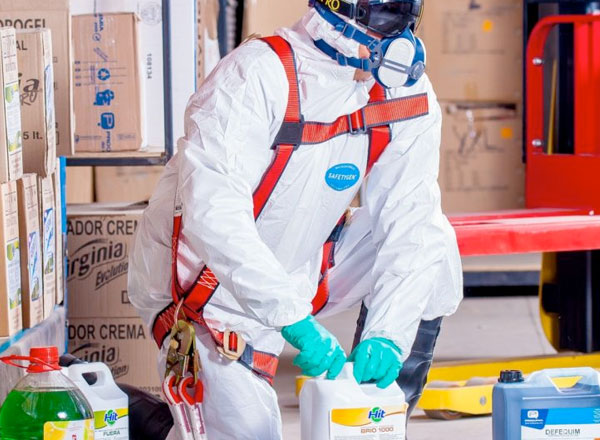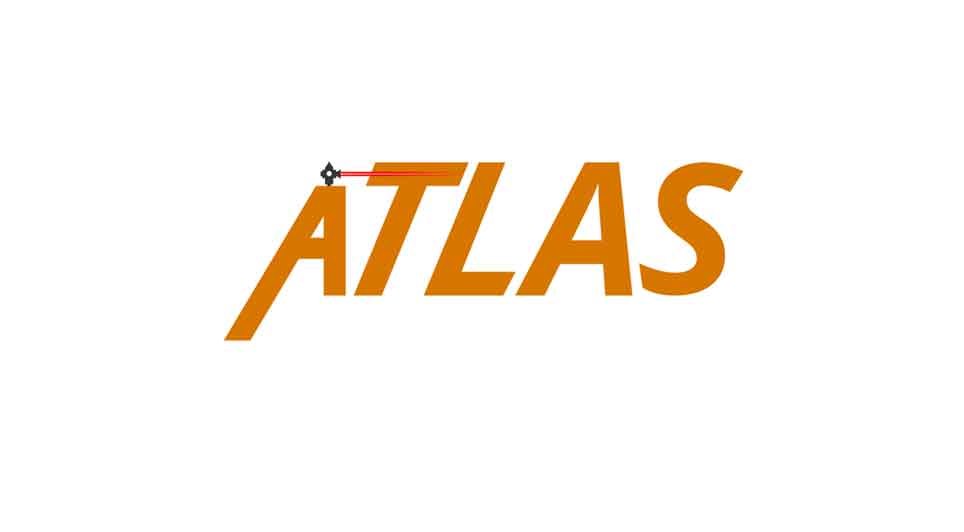Every company should have a Health and Safety policy in place to protect their employees, customers and even members of the public, but just as importantly – their business!
In the UK, if you are self-employed or employ four or less employees this does not have to be written down. You do, however, have to take reasonable measures to ensure the health and safety of yourself, the public and any employees.
If you employ five or more staff members, you must have an accessible, recorded system in place which is accessible to both your staff and any investigators/auditors.
This should be simple, but because the guidance refers to every type of business it is vague by design and allows for different ways to manage the many different risks that the UK-based workforce are confronted with each day.
No matter where you are or what the law in your country says you need, we believe that all businesses should have an effective and thorough Health and Safety policy in place if they want to futureproof their organisation.
Looking at what's required to implement an effective Health and Safety Policy may make you feel overwhelmed and confused.
So that's where we come in - CRAMS - ready to lend a helping hand to businesses of all sizes who need to set up a Health and Safety policy/system, or for people concerned they may not have sufficiently covered off all the necessary requirements.
Competency, Training Tracking and Planning
Regardless of whether you are someone working alone or as part of a team, competency training is a must.
Having properly trained staff is the best way to ensure you are running your operations both efficiently and safely.
What is Competency Training?
Competency Training is training delivered to your staff that's directly linked to their role or a work task they complete. To give some context, an example could be a Working at Heights course for a Telephone Line Engineer, or perhaps an Asbestos Awareness Course for a Builder.
However, a common mistake people make is assuming they don't need to put a policy in place because they're not operating in a 'physical sector'. For example:
Desk workers should complete a DSE (Display Screen Equipment) course to ensure they are working correctly.
Your office cleaners may "just be doing what they do at home", but if they're completing their tasks without appropriate COSHH (Control of Substances Hazardous to Health) training or if method statements haven't been put in place, you could be looking at a very expensive and embarrassing court case.
Essentially, consider every possible risk related to tasks carried out by your staff, no matter how small or insignificant it seems. If it can be tackled with training – get it booked!
How should Competency Training be delivered?
For specific qualifications that are required to practice, obviously there is no corner cutting to be done.
However, if you want to train your office staff on a range of topics from Equality and Diversity to Data Protection, you can do so by booking them on e-learning courses.
The beauty of e-learning is your staff will experience minimal disruption to their working day. As they can often complete their training at their own desks it means there is no travel time wasted as they can hop straight back into what they were working on before.
E-Learning more than you want to pay?
If you are trained and qualified on the topics you need staff training for, you can provide on-the-job training for all your staff yourself, as long as you audit completions and arrange refreshers as and when required.
You can offer on-the-job training for all sorts of tasks, whether that's mopping the floor or changing the water bottle on the water cooler.
Just make sure you have checked out the latest advice on any risk types that are involved in the task to ensure your methods are above board and safe.
How do I audit Competency Training?
The simple way!
Create a document which has columns for:
• Staff member name.
• Course name (whether informal in-house or accredited).
• Completion date.
• Signed off by.
Once you've created the above document just make sure you keep on top of it by ensuring refreshers are arranged as often as advised.
Have a search online and you'll start to get a feel for what other companies are doing with regards to refresher intervals and if you are unsure take advice from a Health and Safety professional.
What about Competency Planning?
Competency Planning is simply managing a diary of refresher courses, ensuring your new staff are given all the training opportunities they require and that all existing staff are given refreshers at appropriate intervals. It's also important that every refresher course is tracked.
Remember that if your audit log doesn't show a course completion and there's no other way to prove it was completed, in the event of an accident it would be assumed that the training was not given.
It's in everyone's best interests to properly log all training given – be that informal or accredited.
What else do I need to know?
Be aware that you need to assess your work tasks each time a change occurs, so if you change the brand of product, buy a new tool or even just change the time a person completes a task, you need to then reassess training needs.
It could mean bringing in new requirements for Lone Working, for example, or some new COSHH training requirements.
Be confident that you know the task inside out and have considered every part of it.
Don't be afraid to ask for help – H&S Consultants are available to visit your organisation and advise you for a fee. Any fee will be much less expensive than a non-compliance case, so taking this advice may prove to be worth every penny. Just make sure you're dealing with a reputable company who are suitably qualified.
RAMS (Risk Assessments & Method Statements)
As an employer, you must complete Risk Assessments for your staff and their work tasks. In the UK risk assessments are required by law when a workplace employs more than five employees.
To complete one, you must think carefully about the ways in which someone may come to harm because of their work, and also consider the steps that are possible to eliminate or mitigate the overall risk involved to the employee, contractor or member of the public.
A risk assessment should be used as an aid to ensure that all the dangers are covered in your working environment.
The UK Health and Safety Executive (HSE) recommend five steps to writing an effective risk assessment:
• Identify the hazards.
• Decide who might be harmed and how.
• Assess the risks and take action.
• Make a record finding.
• Review the risk assessment and update if necessary.
We have broken down these five steps to provide you with further guidance about how to set about doing your risk assessments – however, we would recommend having a Health and Safety Consultant check over any assessments you complete to ensure compliance.
CRAMS has also outlined a five-step method - available here.
Author: Jack Dockerty
www.crams.online
Construction News
16/05/2019
Everything You Need To Know About SME Health & Safety Compliance


04/07/2025
JV North has announced the list of contractors and consultants appointed to its £500 million social housebuilding framework, which aims to deliver around 3,000 homes across the North West over the next four years.
The housing consortium, which includes 14 members, launched the procurement process i

04/07/2025
Work has officially started on preparing Eston Precinct for demolition, marking the first step in a major regeneration project led by Redcar & Cleveland Borough Council.
Esh Construction has been appointed to deliver the scheme, which will begin with the safe removal of asbestos and the soft strip

04/07/2025
The Secretary of State for Energy Security and Net Zero hasgranted development consent for the Mona Offshore Wind Farm.
The scheme, located in the Irish Sea, will deliver approximately 1,500MW of clean energy capacity and forms part of the Round 4 Offshore Wind Licensing Arrangements. The applicati

04/07/2025
The restoration of Chatham’s iconic Brook Theatre is officially underway, with the appointment of contractors to carry out the £21 million transformation of the 125-year-old building.
Originally opened in 1899 as Chatham Town Hall, the Grade II listed Renaissance-style landmark has served the commu

04/07/2025
Work to upgrade a flood-prone section of Stockbridge Road in Timsbury is set to begin later this month, as part of a joint project between the Environment Agency and Hampshire County Council to improve local flood defences.
Starting on 28 July, the five-week scheme will deliver vital improvements a

04/07/2025
Oldham's town centre regeneration has taken a major step forward, with planning consent now granted for all six sites earmarked for transformation through the partnership between Muse and Oldham Council.
The approval represents a significant milestone in the long-term vision to create a vibrant, in

04/07/2025
As temperatures soared during this week's heatwave, euroloo's innovative EcoWelfare units proved to be a game-changer on construction and outdoor sites across the country.
Designed with comfort and sustainability in mind, these multi-functional welfare units offer everything teams need to stay pro

04/07/2025
Atlas Site Engineering, a trusted name in precision setting out and site engineering services, continues to support the construction industry with expert solutions ranging from small residential extensions to multi-storey high-rise developments.
With a reputation for accuracy and reliability, Atlas

03/07/2025
Associated British Ports (ABP) has submitted a reserved matters application for 103,000 sq ft of speculative industrial and logistics space at Helm @ Immingham.
This marks the first phase of development at the 227-acre site.
The scheme will deliver a range of purpose-built units from 4,820 sq ft

03/07/2025
First Choice Homes Oldham (FCHO) is set to begin a major new phase of energy efficiency upgrades this month, with a £6.1 million investment aimed at improving 645 homes across the borough.
Starting 14 July, properties in Abbey Hills, Roundthorn, Shaw, and several estates in Chadderton will receive
 UK
UK Ireland
Ireland Scotland
Scotland London
London











